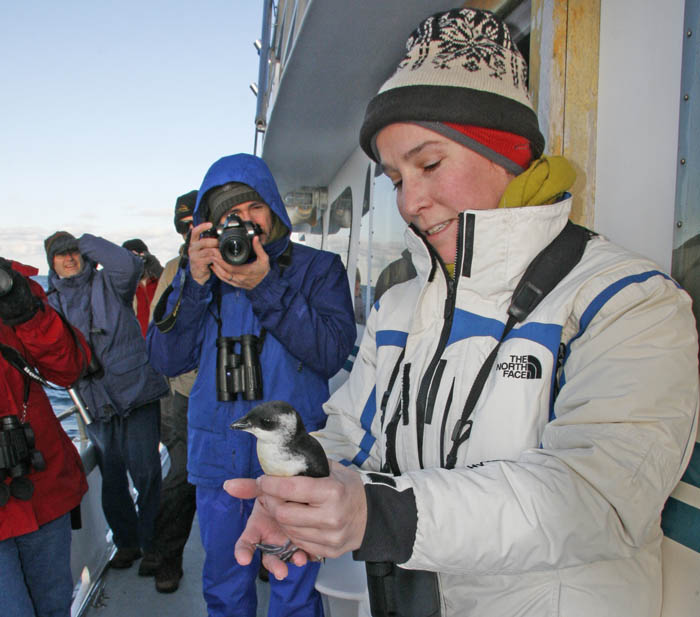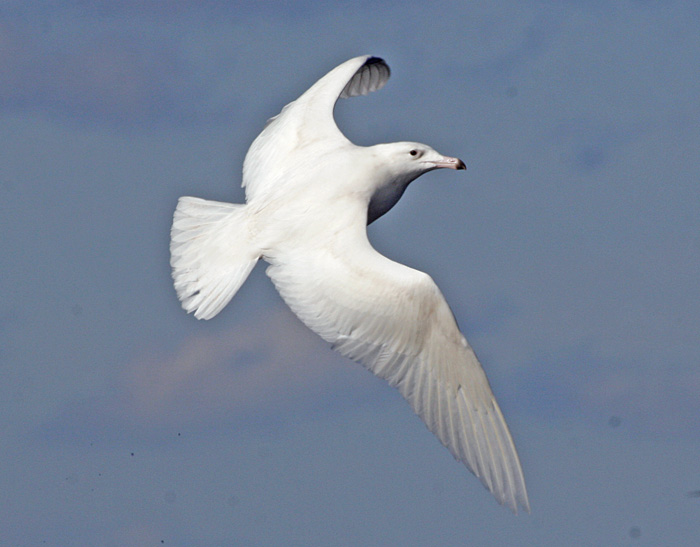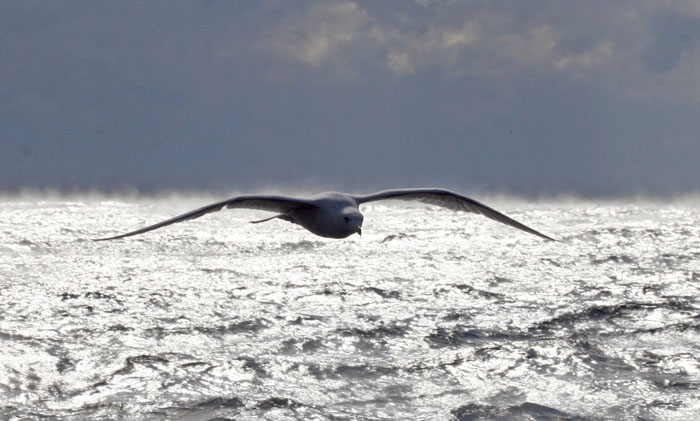Winter 2009 Photos and Highlights
Jan. 17, 2009 Hatteras pelagic trip
This was not a trip I expected to get many late registrations for. It
was the first trip of the year, following a rather dull trip in late December.
Plus the weather forecast called for a subfreezing start to the day and a high
in the low 30's here at Cape Hatteras. This is cold weather for these
parts, at least in recent years.
On Friday morning I got word of two Dovekies which had gotten off course.
One was already at Lou Browning's rehab complex just up the road in Frisco.
The other had been found in a yard in Nags Head that morning. I
volunteered to fetch that auk and bring it to Lou, so we could assess its
fitness and he could give the care it required. After feeding, watering,
and the administration of some vitamins, both birds seemed to be in very good
condition, so Lou suggested releasing them at sea the next day.
When I met our passengers the next morning, I told them to expect a cold day
with some freezing spray in the morning, but I offered them a promise
that I would show them a Dovekie, though I couldn't guarantee that they
could count it. We headed east of the inlet a few miles and did not toss
out any chum along the way. I was hoping for some sunlight,
but finally had to give up on that, so we stopped just west of Diamond Shoals.
I handed the box to Kate, and to everyone's delight she produced not one, but
two little starling sized auks. After some pictures, both seemed to
get off OK, and we did not see any harrassment by gulls which we had not fed
prior to the release.

Kate prepares to release a Dovekie - photo by Brian Patteson
It was a cloudy, choppy morning, and when we got to the shoals
there were some nice aggregations of gannets feeding. We soon encouraged
some gulls and a few gannets to follow us, and it wasn't long before we were
visited by a first winter Glaucous Gull. A little farther out to sea, we
began to see some Northern Fulmars and we saw one or two Manx Shearwaters as
well. The water was cold enough for alcids all the way out to the edge
of the continental shelf- about 50 degrees. Out on the horizon the water
was smoking. In the zone of 50 to 55 degree water there was a good
bit of life and we found some "wild" Dovekies, Razorbills, and
another young Glaucous Gull. Out in the sea smoke where the water
ultimately topped 67 degrees, there were several small flocks of feeding
Bonaparte's Gulls. Unfortunately, there was no hard edge to be found, and
we did not see any phalaropes, which you would expect to be around if
there was a sharp break. We did see several Loggerhead Turtles though;
some of these were in the fifty-some degree water too. One memorable
highlight was an Ocean Sunfish breaching right beside the boat (twice!)
This is a most improbable looking event, one I had never seen so closely
before. The afternoon was nice with lots of sunshine and less wind.
The second Glaucous Gull followed us inshore for miles. Birds were
quiet during the afternoon, with lots of gannets loafing. We found some
Razorbills feeding under Bonaparte's Gulls (an old trick) and got some great
looks. We did not find any skuas or puffins this time, but these
might be present when we head out again next month. Not counting our
stowaways, we saw at least 13 Dovekies. Last year we saw three or four
on Jan. 5, none on Jan. 19, and at least 80 on Jan. 26. Our highest
count in 2008- over 100- was made on Feb. 2, when we had very calm conditions.
It is worth mentioning that Dovekies do not move this far south every winter,
so if you are keen to see one, this seems to be a Dovekie winter.

Glaucous Gull - photo by Kate Sutherland

Glaucous Gull and sea smoke - Photo by Kate Sutherland
Our next trip is February 7(8). On President's Day Weekend, we are
planning to run two trips in three days, weather permitting (Saturday to
Monday.) Saturday trips with Sunday weather dates resume on Feb. 21
(22) and Feb. 28 (March 1). In past years about 60% of the February
trips have found Great Skuas. We have run 20 trips here in February
since 1994, and these trip lists are posted on the site.
Winter trips are actually a good introduction to birding at sea. There
are many more birds inshore at this season than during spring or summer,
so the action can be nonstop. Many of the interesting pelagic birds can
be found fairly close to shore at times during winter, and with the chum,
there are great photo ops. Just seeing the gannets up close is worth it
for many people.



